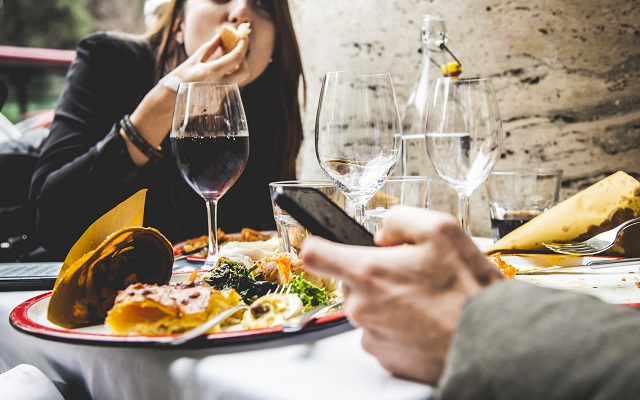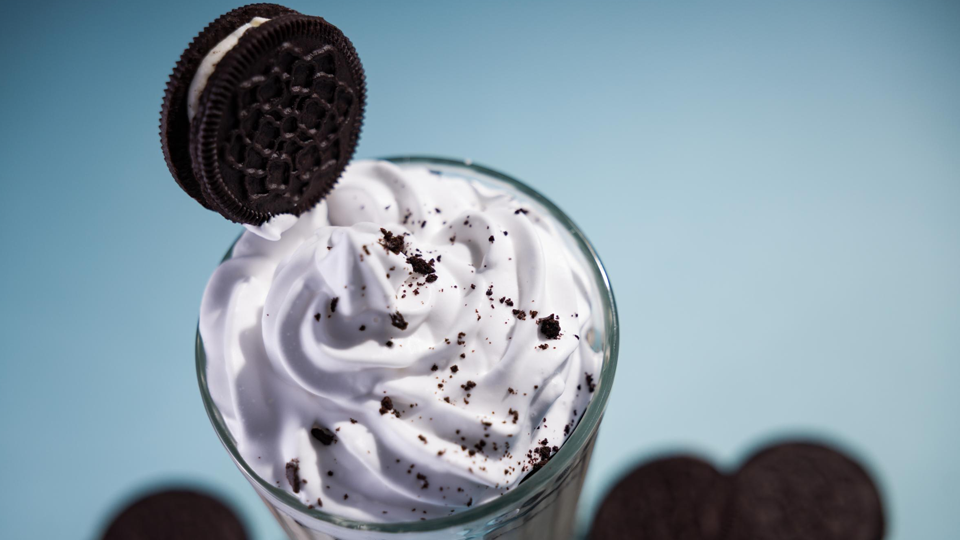When you sit down to eat a meal, there’s a lot more affecting your eating choices than just your appetite. Subtle surroundings can actually influence how much you eat.
A recent study published in the journal PLoS ONE suggests that whether you are eating lunch with coworkers or out to dinner with your family, the people you eat with have an effect on how much you eat (1).
Other studies have shown that the amount you eat during a meal can also be influenced by the size of the dishes used to serve your food. Researchers have shown that serving a meal on a large plate can cause you to significantly underestimate your serving size and can result in eating more than you intended (2, 3).
We’re all surrounded by subtle influences that can encourage mindless overeating. Here are four strategies you can use to tune out your environment, become more mindful, and put yourself back in charge of how much you eat at each meal.
1. Focus on Your Food
Part of eating mindfully is paying more attention to your food at every meal and snack. Take time to really taste and enjoy each bite. Savoring your meal will also help you pace yourself. It takes a while for your stomach to tell your brain that it’s full (4). Eating at a slower pace will give your body time to feel satisfied before you begin feeling overly full.
2. Choose To Be the Tortoise Instead of the Hare
When dining with a group, sit next to the slowest eater. There’s almost always one person in every group who is still working on the main course when everyone else has moved on to the dessert menu. Since we unconsciously mirror the behavior of our dining companions, why not use this tendency to your advantage? Sitting next to the slowest eater in your group can help you moderate your own pace.
3. Outwit Optical Illusions
Large plates and glasses can lead you to consume larger portions without noticing the increase in serving size. When you’re at home, it’s easy to outsmart this optical illusion by choosing smaller cups, plates, or bowls, but that is not the case when you’re dining out. However, you can outsmart the illusion by asking for half of your food to be put in a to-go box before you start your meal. That way, you can eliminate concern for accidental overeating right from the start.
4. Know Your Limits
Another way to beat mindless overeating is to set some limits for yourself beforehand. If you’re heading to a restaurant, decide what you’ll order while you’re still at home. Stick to your decision. If you’re at a buffet or a potluck, come up with some limits ahead of time. You might set boundaries such as a number of pizza slices, or a commitment that you’ll only eat what you can fit on your plate without going back for seconds. By setting limits in advance, you can help counter the influences in your environment.
Small Changes, Big Impact
By raising your awareness of these common pitfalls and checking in with yourself during mealtimes, you’ll not only receive more enjoyment from food, but you can also avoid mindless overeating.
The size of your plate and the habits of the people you are eating with are just a few of the subtle influences that encourage mindless overeating. Whether you’re eating out or enjoying a meal at home, the key is to take note of influences that are all around you.
References
- Hermans RC, Lichtwarck-Aschoff A, Bevelander KE, Herman CP, Larsen JK, Engels RC. Mimicry of food intake: the dynamic interplay between eating companions. PLoS One. 2012;7(2):e31027. doi: 10.1371/journal.pone.0031027.
- McClain AD, van den Bos W, Matheson D, Desai M, McClure SM, Robinson TN. Visual illusions and plate design: the effects of plate rim widths and rim coloring on perceived food portion size. Int J Obes (Lond). 2014 May;38(5):657-62.
- Robinson E, Nolan S, Tudur-Smith C, Boyland EJ, Harrold JA, Hardman CA, Halford JC. Will smaller plates lead to smaller waists? A systematic review and meta-analysis of the effect that experimental manipulation of dishware size has on energy consumption. Obes Rev. 2014 Oct;15(10):812-21.
- Zandian M, Ioakimidis I, Bergh C, Brodin U, Södersten P. Decelerated and linear eaters: effect of eating rate on food intake and satiety. Physiol Behav. 2009 Feb 16;96(2):270-5.





